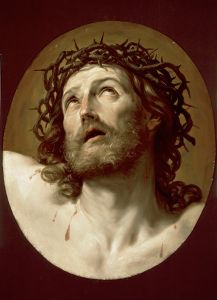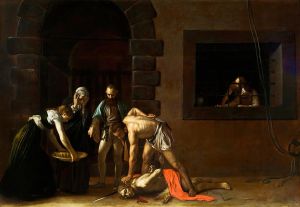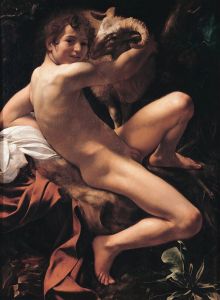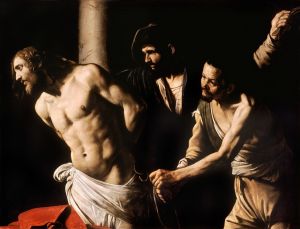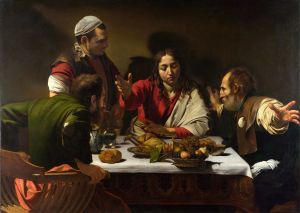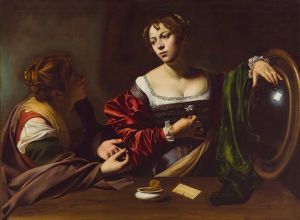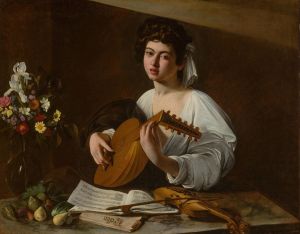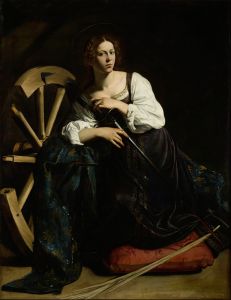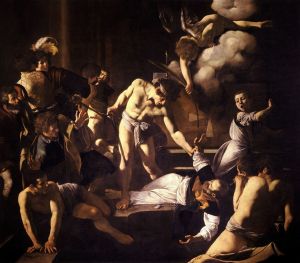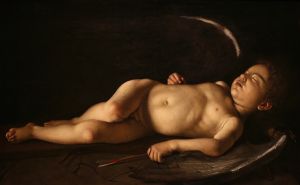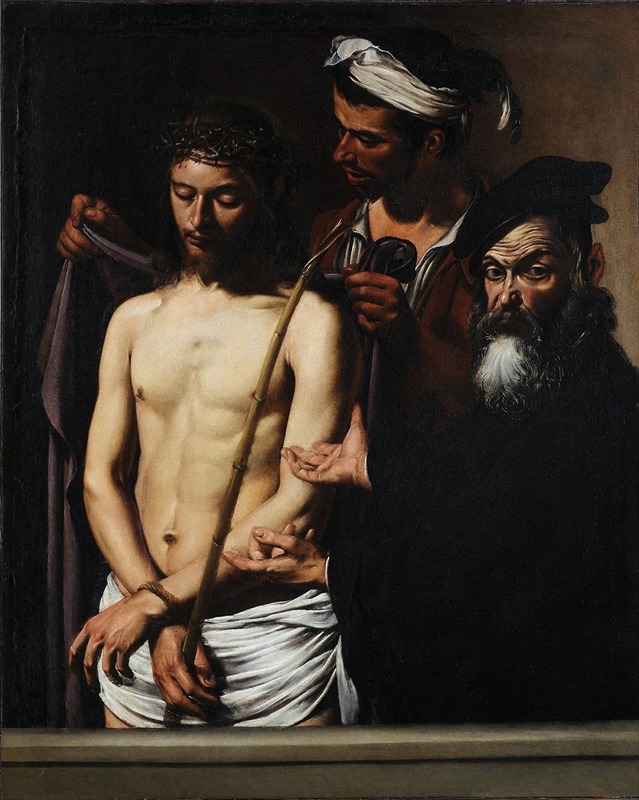
Ecce Homo
A hand-painted replica of Caravaggio’s masterpiece Ecce Homo, meticulously crafted by professional artists to capture the true essence of the original. Each piece is created with museum-quality canvas and rare mineral pigments, carefully painted by experienced artists with delicate brushstrokes and rich, layered colors to perfectly recreate the texture of the original artwork. Unlike machine-printed reproductions, this hand-painted version brings the painting to life, infused with the artist’s emotions and skill in every stroke. Whether for personal collection or home decoration, it instantly elevates the artistic atmosphere of any space.
"Ecce Homo" is a painting by the Italian Baroque master Caravaggio, created around 1605. The title "Ecce Homo" translates to "Behold the Man," a phrase attributed to Pontius Pilate in the Christian New Testament when he presents a scourged Jesus Christ, bound and crowned with thorns, to a hostile crowd shortly before his crucifixion. This moment is a significant event in the Passion of Christ, and it has been a popular subject in Christian art.
Caravaggio's "Ecce Homo" is known for its dramatic use of chiaroscuro, a technique that employs stark contrasts between light and dark to achieve a sense of volume and three-dimensionality. This technique is a hallmark of Caravaggio's work and contributes to the emotional intensity of the scene. The painting captures the moment with a raw and realistic portrayal, focusing on the human suffering and dignity of Christ.
In this composition, Christ is depicted with a crown of thorns, a symbol of his suffering and mockery by the Roman soldiers. His expression is one of resignation and sorrow, reflecting the gravity of the moment. The figure of Christ is typically shown with a muscular, yet emaciated body, emphasizing both his physical strength and the toll of his suffering.
Caravaggio's approach to religious subjects was revolutionary for his time. He often used ordinary people as models, bringing a sense of realism and immediacy to his work that was unprecedented. This approach was both celebrated and criticized by his contemporaries. In "Ecce Homo," the figures are rendered with a naturalism that makes the scene relatable and poignant, inviting viewers to engage with the emotional and spiritual dimensions of the narrative.
The painting's provenance is somewhat complex, as is often the case with Caravaggio's works. It is believed to have been commissioned by Cardinal Massimo Massimi, a patron of the arts and a significant figure in Rome during Caravaggio's time. The work was intended for private devotion, which was common for religious paintings of this nature.
"Ecce Homo" has been housed in various collections over the centuries. Today, one of the versions attributed to Caravaggio is located in the Palazzo Bianco in Genoa, Italy. However, as with many of Caravaggio's works, there are debates among scholars regarding the attribution and the existence of multiple versions or copies by followers and imitators.
Caravaggio's influence on the art world was profound, and his "Ecce Homo" exemplifies the dramatic realism and emotional depth that characterize his oeuvre. The painting continues to be studied and admired for its technical mastery and its powerful depiction of a pivotal moment in Christian theology.






